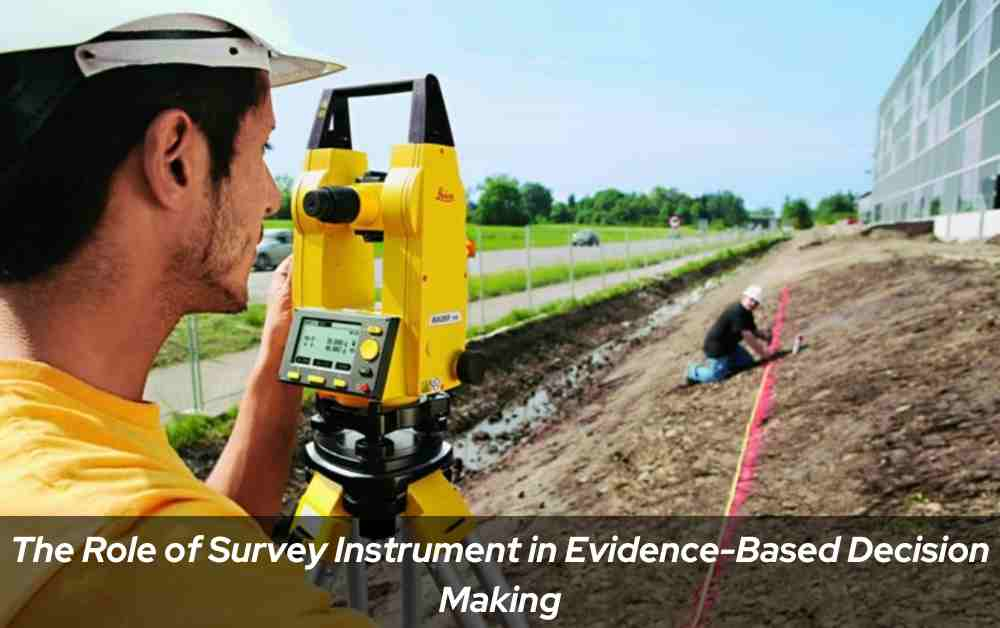Introduction
Survey instruments are the unsung heroes of evidence-based decision-making. In this blog post, we embark on a journey to demystify the role of survey instrument in the decision-making process. By understanding their significance in simple terms, we can appreciate how these tools pave the way for informed choices that resonate with real-world needs.
The Basics: What Are Survey Instruments?
Before we dive into their role, let’s take a moment to clarify what we mean by survey instruments. These are the tools or techniques we use to collect data from individuals, helping us understand their opinions, experiences, or preferences. Picture them as the reliable companions on our quest for insights.
The Foundations of Decision Making
Understanding the Bedrock – Reliable Data
At the core of every decision lies data. Survey instruments serve as the architects of data collection, laying the foundation for decisions grounded in reliable information. Imagine making decisions without a clear understanding of the landscape – it would be like navigating in the dark. Survey instruments illuminate the path, providing the data compass we need.
Navigating with Purpose – The Role of Objectives
Every decision-making journey has its objectives, and survey instruments are our trusted guides. They help us define what we aim to achieve, ensuring that the questions asked and data collected align with our destination. Without this clarity, decisions become aimless ventures, prone to veering off course.
Survey Instruments as Tools of Understanding
Peering into Perspectives – The Power of Questionnaires
Imagine a conversation with thousands – that’s the potential of questionnaires. These written sets of questions allow us to grasp perspectives on a large scale. Simple, straightforward, and versatile, questionnaires are like windows into the minds of those we seek to understand.
Unveiling Narratives – The Magic of Interviews
In the realm of understanding, interviews take center stage. These direct conversations provide a depth of insight that questionnaires might miss. It’s like turning on the spotlight in a dim room, revealing the nuances and details that shape individual narratives.
Crafting the Decision-Making Canvas
The Digital Palette – Painting with Online Surveys
In our digital age, online surveys emerge as the artists’ palette. They allow us to craft our decision-making canvas with convenience and efficiency. With a click, respondents share their thoughts from the comfort of their digital spaces, contributing to a vibrant tapestry of data.
Collaboration on Canvas – The Dynamics of Focus Groups
Decision-making is a collaborative masterpiece, and focus groups bring individuals together on the canvas of insights. Like artists discussing their craft, participants interact, building on each other’s ideas. It’s a dynamic process where the canvas evolves with every brushstroke of conversation.
Survey Instruments as Lenses on Reality
Observing the Unseen – The Lens of Observational Surveys
Reality unfolds in ways unseen, and observational surveys act as lenses capturing these moments. Whether it’s behaviors in a retail setting or interactions in a social space, these surveys reveal the subtleties that words might not convey.
The Decision-Making Mosaic
Weaving Insights Together – The Collaborative Approach
Just as a mosaic is crafted from diverse pieces, decisions benefit from a collaborative approach. By combining survey instruments, we weave together a comprehensive understanding. It’s like assembling a mosaic, each piece contributing to the bigger picture.
Ensuring a Clear Path – Factors in Choosing Survey Instruments
Navigating the Decision Crossroads
Choosing the right survey instrument is akin to navigating a crossroads. Consider factors like your research objectives, target audience, budget, timeline, and the type of data needed. Each factor is a signpost guiding you toward the most fitting instrument.
The Test Drive – Piloting Your Survey
Before embarking on a full-scale journey, take a test drive. Pilot your survey instrument on a small scale to identify any bumps in the road. This helps refine your approach and ensures a smoother journey when implemented on a larger scale.
Also read – Understanding the Pros and Cons of Different Survey Instruments
Conclusion
In conclusion, survey instruments are not just tools; they are the architects, guides, and lenses that shape the landscape of evidence-based decision-making. From questionnaires to interviews, online surveys to focus groups, each instrument contributes a unique piece to the decision-making mosaic. By understanding their role and choosing wisely, we pave the way for decisions rooted in real insights. So, let’s appreciate the simplicity and power of survey instruments as we navigate the intricate paths of informed decision-making.
Note: Also read our next blog: 5 Key Benefits of Regular Car Servicing in Dubai

